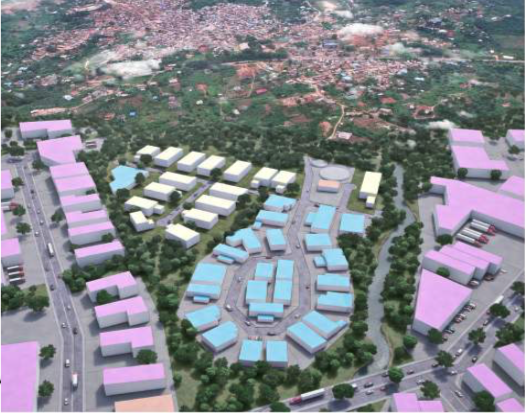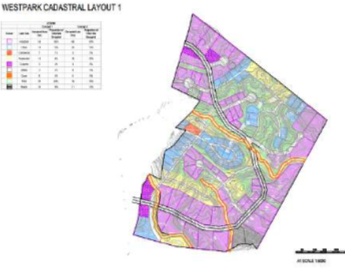Off-Grid Power Generation Solutions in the Takoradi Region, Ghana

Introduction
This case study is from theFRACTAL Adaptation Inspiration Book– this link provides a summary of the book, the other case studies and a downloadable pdf.
This case study focuses on the WestPark industrial development concept plan and represents a unique opportunity towards industrial space within this area. This concept was completed in 2015 and entailed the development of a master plan for the WestPark industrial Park including:
- Developing appropriate land-use zones
- Land infrastructure concept designs
- Off-grid electric power generation solutions
- Urban Agriculture: Improved Governance for Resilience in Bulawayo, Zimbabwe
- Meeting Ethiopia’s Development Goals by Addressing Links between Water, Energy and Food
- Africa’s First Direct Water Reuse Plant in Windhoek, Namibia
- Tackling Soil Erosion and Improving Lives in South- Eastern Nigeria
- Cape Town, South Africa: An integrated approach to river catchment management
- Lesotho: Tackling water insecurity: an assessment of future national water management developed as part of the 2016 Lesotho Water Security and Climate Change Assessment.
- Reconciling Water, Energy and Agricultural Sector Demands in Zambia
- Ensuring Future Water Security through Direct Potable Reuse in Windhoek, Namibia
Climate Risks and Other Stressors

Climate change impacts on natural hazard vulnerability in Ghana are: floods and landslides, coastal erosion and droughts.
Adaptation Approach
The planners of WestPark ensured that the industrial park was adapted for future climates by developing a land-use schedule for residential, business, commercial and industrial zones. Green belts were created to separate the residential and business areas from the commercial and industrial zones.
For this project, a specific bulk earthworks programme was proposed to:
- Provide free drainage of properties;
-
Limit damage to property and areas prone to flooding;
-
Reduce loss of goods and life due to limited flooding;
-
Reduce the implementation cost of civil infrastructure elements (roads, stormwater drainage, sewerage and water.)
-
Provide maximum possible flexibility in urban plan layout changes for future modification, should the client wish to change certain elements/ land uses/ access;
-
Eliminate the need for any type of retention structures throughout the site to maximise the potential for land development, and to reduce potential costs;
-
Find the most effective alternative in terms of construction cost by achieving an approximate net balance between suitable cut material and required fills, considering the assumed amount of unsuitable excavated material to be spoiled off site (Aurecon, 2015).
Links to SDGs

The development of WestPark addresses SDGs 3, 9, 11, 13 and 15. It provides a space for economic development; it is an industrial space that has been designed with sustainability and climate change in mind. The green belts and layouts of the park are intended to boost health, and to provide heat control – measures that are designed to make this development resilient to climate change.
Challenges
Three types of challenges surfaced in the project:
-
The first stemmed from the high variability in the topography of the land. The bulk earthworks devised to deal with the situation required additional planning, and added to costs.
-
The second related to the lack of an established textile industry. The project confronted initially low efficiency levels, and few ancillary supply industries (e.g., packaging).
-
The third related to needed infrastructure. Lack of direct access to the Cape Coast via the Takoradi Road is an issue. The presence of shallow groundwater will likely have implications in terms of the design for roads and drainage of sites in the future.
Benefits
- 12% of the land set aside for the industrial park has been allocated for public open space, which will allow for the channelling of surface water runoff, and for a recreation network (specifically for those living in the area)
-
Two design elements have been proposed that speak to water-focused sustainability on the development: rainwater harvesting, and the potential reuse of the treated sewerage effluent (TSE).
-
While not proposed as an initial power generation solution for WestPark, solar PV generation has been identified as a resource that could potentially be exploited in future design stages of the development.
Lessons Learnt
Business interests and green zones are not necessarily mutually exclusive. Investments in basic infrastructure can be conceived to improve the business environment and the environment. WestPark accelerated the development of the Takoradi region by attracting investments in gas, power, port and rail infrastructure.
These investments benefitted commercial and residential zones in the enclave through improved access to reliable power, water and transport, which are often challenges for sub- Saharan African regions.
The building development company used the incentive of low wages in the Ghanaian textile industry to encourage businesses to relocate to Ghana, and to generate additional investments into WestPark, but the strategy drew criticism. This underscores how sensitive the debate can be over finding a balance between the costs and benefits of equitable growth. However, experience has also shown that seeking to combine economic development with elements that enhance adaptation to future climatic conditions can prove beneficial for the region and its people.
Key Messages
- The planners of the WestPark industrial plan had to ensure that it was adapted for future climates by developing a land-use schedule for the different land-users.
- Infrastructure, lack of an established textile industry and the topogrophy of the land were big challenges for implementing this industrial development plan in Ghana.
- WestPark accelerated the development of the Takoradi region by attracting investments in gas, power, port and rail infrastructure.
Related resources
- WestPark to build first industrial and business park in Africa wholly powered by renewable energy
- Urban Agriculture: Improved Governance for Resilience in Bulawayo, Zimbabwe
- Meeting Ethiopia’s Development Goals by Addressing Links between Water, Energy and Food
- Africa’s First Direct Water Reuse Plant in Windhoek, Namibia
- Tackling Soil Erosion and Improving Lives in South- Eastern Nigeria
- Cape Town, South Africa: An integrated approach to river catchment management
- Lesotho: Tackling water insecurity: an assessment of future national water management
- Reconciling Water, Energy and Agricultural Sector Demands in Zambia
- Ensuring Future Water Security through Direct Potable Reuse in Windhoek, Namibia
(0) Comments
There is no content